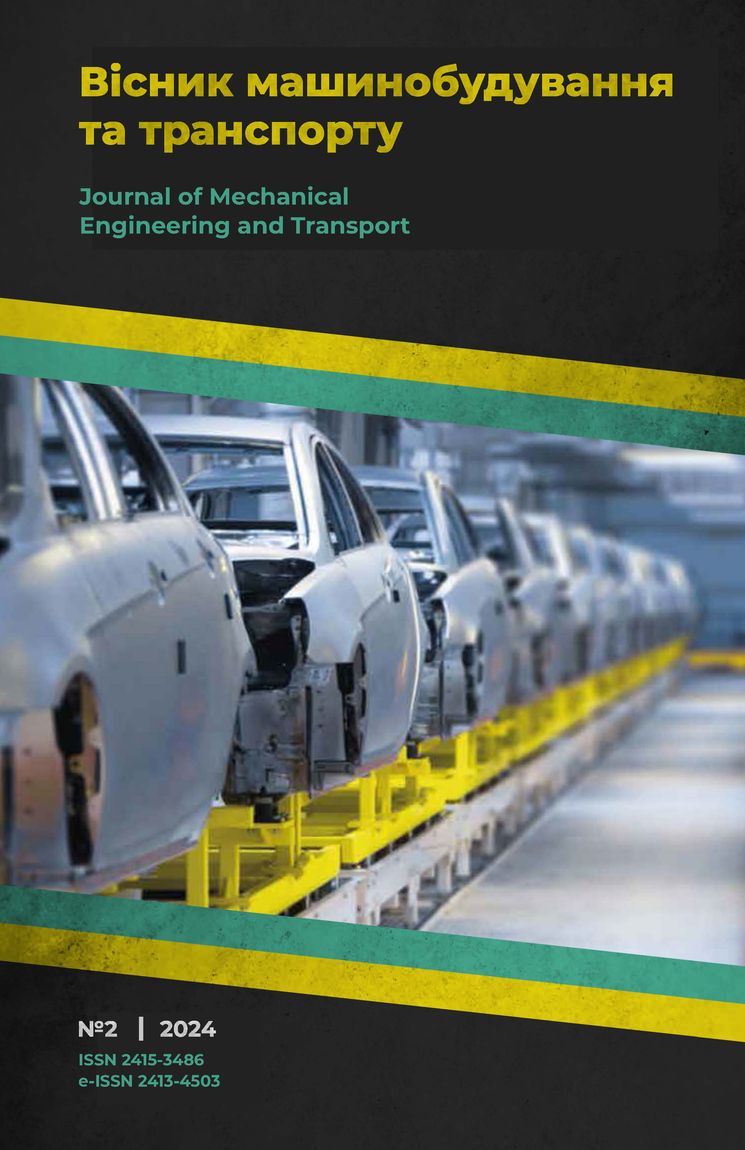An example of foundry technology for the production of a wide range of metal structures for further scalingin the process of developing mechanical engineering
DOI:
https://doi.org/10.63341/vjmet/2.2024.11Keywords:
small-scale production, foundry, sand mould, Lost Foam Casting, development of mechanical engineering, product nomenclatureAbstract
In view of the prospects for the development of domestic mechanical engineering, the type of production of metal products and an active example of its implementation, which are recommended for scaling, are considered. The production of a wide range of metal products in different series, characteristic of the Lost Foam Casting (LFC) technology, can contribute to the creation and strengthening of industrial growth centres at the stage of mechanical engineering restoration. This type of production allows for a quick response to market needs, requires a small initial investment, and has significant potential for scaling up. The flexibility of such production lies in the rapid adjustment of the product range, its customisation to customer requirements, and its innovative potential, which is associated with the simplified introduction of new technologies, including their digitalisation. This article describes a foundry using the LFC process. Samples of its products, features, and advantages of LFC technology are presented, along with the low investment requirements for establishing such a workshop due to the possibility of manufacturing most of the necessary equipment and accessories domestically. The strength of the foundry sand mould in LFC is ensured by the application of physical principles, specifically the unique use of the gas pressure gradient in the mould walls resulting from the evaporation of a disposable foundry pattern made of foam polymer. This enables the creation of a foundry mould from dry quartz sand, which flows around pattern structures of various geometric configurations during formation with vibration compaction, as well as the multiple circulation of this sand. The prospects for the digitalisation of the LFC process, with an emphasis on 3D printing of foundry patterns, are highlighted. The influence of the main technological parameters of LFC on the quality of castings is illustrated using an Ishikawa diagram, where individual factors are marked based on the latest research and significant experience in improving the LFC process by scientists from PTIMA of the National Academy of Sciences of Ukraine
References
Askerov, M.G. (2021). New materials for the production of interchangeable parts of tillage agricultural machinery. Bulletin of the National Technical University “KhPI”, 2(8), 3-8. doi: 10.20998/2413-4295.2021.02.01.
Baykasoglu, A., Büyükozkan, G. & Dereli, T. (2004). Technology oriented new product development in a rapidly changing world. In Proceedings of the conference IMS-2004, 4th international symposium on intelligent manufacturing systems (pp. 1040-1048). Sakarya: Turkey.
Bilopolskyi, M., Merkulov, M., Tsimoshynska, O., Palii, S., & Mazur, Y. (2024). Modern trends in the development of the market economy of Ukraine in the vector of the globalized innovation and investment space. Bulletin of the East European University Economics and Management, 1(31), 16-29. doi: 10.58253/2078-1628-2024-1(31)-002.
Cheiliakh, O.P., & Cheiliakh, Ya.O. (2020). Implementation of physical effects in the operation of smart materials to form their properties. Progress in Physics of Metals, 21(3), 363-463. doi: 10.15407/ufm.21.03.363.
Densen Group. (2020). The process sequence of Lost Foam casting process. Retrieved from https://surl.li/dieezh.
Doroshenko, V.C., & Kalyuzhny, P.B. (2024). Isothermal hardening of iron-carbon alloys combined with their casting. The Scientific Technical Journal Metal Science and Treatment of Metals, 30(1), 47-59. doi: 10.15407/mom2024.01.047.
Doroshenko, V.S. (2021). Neutralization of gases during metal casting by gasifying models and prerequisites for using 3D-printed models for this. Casting Processes, 145(3), 32-43. doi: 10.15407/plit2021.03.032.
Feier, A., Dankanych, V., & Niagovskyi, I. (2023). Diversification of regional economy: Key to sustainable development. International Scientific Journal “Education and Science”, 1(34), 238-246.
Gnatush, V.A. (2024). Metal castings market 2020-2022: World, Europe, Ukraine. Casting Processes, 2(156), 64-74. doi: 10.15407/plit2023.02.056.
Ishchuk, S.O. (2022). Development of mechanical engineering in Ukraine: Problems and ways to solve them. Lviv: State University Institute of Regional Studies named after M. I. Dolishny NAS of Ukraine.
Ishikawa, K. (1985). What is total quality control? The Japanese way. London: Prentice Hall.
Jordan, S., & DeBruin, M. (2017). Additive manufacturing evaporative casting. In Contributed papers from materials science and technology 2017 (MS&T17) (pp. 281-288). Pittsburgh: David L. Lawrence Convention Center. doi: 10.7449/2017/MST_2017_281_288.
Jordan, S., Debruin, M., Cilkilic, E., & Luo, A. (2021). Thin-walled ductile iron with lost foam and nobake casting. Modern Casting, 111(9), 40-45.
Kumar, S., Kumar, P., & Shan, H.S. (2007). Effect of process parameters on the solidification time of Al-7%Si alloy castings produced by VAEPC process. Materials and Manufacturing Processes, 22(7-8), 879-886. doi: 10.1080/10426910701448941.
Kushnirenko, O., & Gakhovich, N. (2023). Strategic directions of post-war recovery of mechanical engineering in Ukraine. Economic Bulletin of the University, (56), 5-15. doi: 10.31470/2306-546X-2023-56-05-15.
Lehmhus, D. (2022). Advances in metal casting technology: A review of state of the art, challenges and trends - Part I: Changing markets, changing products. Metals, 12(11), article number 1959. doi: 10.3390/met12111959.
Michaels, R. (2005). Final technical report quantification and standardization of pattern properties for the control of the lost foam casting process. Seymour: Industrial Analytics Corporation. doi: 10.2172/850341.
Modular mine trawl with improved characteristics. (2018). Retrieved from https://surl.gd/gmnoop.
Natsir, Ch. (2022). What is advanced manufacturing and its benefits for your company? Retrieved from https://www. hashmicro.com/blog/what-is-advanced-manufacturing/.
Shinsky, O.Y., Shalevska, I.A., Shinsky, V.O., Kalyuzhny, P.B., Shevchuk, T.V., Lysenko, T.V., Slyusarev, V.A., Pogrebach, E.V., & Kolomiytsev, S.V. (2018). Principles of construction and identification of a multi-level system for controlling parameters of the technological cycle of production of cast structures. Eastern-European Journal of Enterprise Technologies, 5/1, 25-32.
Shulyak, V.S. (2007). Casting according to gasified models. St. Petersburg: Professional.
Sobkevich, O.V. (2024). Directions of the development of mechanical engineering in Ukraine as a driver of economic development during the war and in the post-war period. Retrieved from https://niss.gov.ua/doslidzhennya/ekonomika/ napryamy-rozbudovy-mashynobuduvannya-v-ukrayini-yak-drayvera-ekonomichnoho.
Unite engineering schools for the reconstruction of Ukraine. (2024). Retrieved from https://kpi.ua/node/20803.
Downloads
-
PDF (Українська)
Downloads: 1



